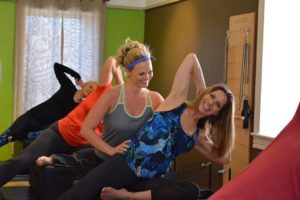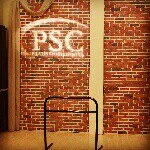3 Things To Expect From a Pilates Teacher Training Program
Tuesday, Jul. 9th, 2019Becoming a Pilates instructor is a commitment. It takes time, money, space in your brain, and a commitment to bettering the health of people. With that in mind, let’s dive right into our favorite type of blog…LISTS! This is a list of the top 3 things to expect OR what you should expect from a Pilates teacher training program.
1. Let’s begin with that first sentence, it takes money, or better yet, your hard earned money to get your certificate of completion in a full, comprehensive Pilates program, and that should include Mat, Reformer, Wunda Chair and Cadillac. These are really paramount to becoming a Pilates instructor, and for you to be a good hire for a studio, they are going to insist most of the time that you come prepared to teach on all of these apparatus. If they don’t care, then that should be a red flag to you. Quick note, Barrels is now part of the PMA test, so ensure that the program you are researching has that component that they can offer.
2. Time. How much time do I need to invest to get my comprehensive diploma? This is a grand question, and believe me it varies greatly. The Pilates Sports Center Teacher Training program, for example, is a 16 week program, meaning in 16 weeks you will be ready to take your written and comprehensive exams. You will still need to complete your observation, self-integration, practice teaching hours, but the time commitment of class time is 16 weeks. So, if someone is selling you a “cheap” weekend cert, you will not be ready, in fact, you may feel ripped off. On the contrary, if someone offers multiple levels per apparatus and 3 years of training in excess of $10,000 that may not be for you. For comparison, the PSC teacher training program is $4900 with our MT’s around the US and abroad, and $5900 with the founding studio/founders here in Encino, CA. A sensible price to pay with both your time and money to begin a new career.
3. Anatomy. Pilates instructors are not doctors, and they should not be prescribing anything for you, however, a solid teacher should have learned anatomy and fundamentals in their teacher training program. If the bulk of what they are learning, especially early on is memorization of Pilates exercises, they will be unprepared for what their clients really need! Underline, exclamation point! The PSC teacher training program begins with “Nuts and Bolts and Fundamentals.” The purpose of this is to prepare students that each body in front of them is different. N&B is an alignment protocol and teaches postural alignment and basic anatomy so that when a client walks in with one leg a half inch shorter than the other, the instructor will be able to assess it during footwork and will understand what to do for that client. If a client walks in the door and has kyphotic (kyphosis) with a major neck shear, they will understand that client doesn’t need flexion exercises, but needs extension work. None of this would be possible without a students understanding of anatomy.
We are hopeful that this “top 3” list will help in your quest to find the best comprehensive Pilates Teacher Training program out there. If you have more questions about ours, please visit us at: Pilates Sports Center for more info. If you are outside the LA area, we have over 50 qualified PSC Master Trainers teaching across the USA. Put in your zip code and see if there’s one near you! From Arizona to Wisconsin, we are out there, working on helping one body at a time. Until next time, progress, not perfection.
Tags: pilates anatomy, pilates certification, pilates education, pilates master training, pilates sports center, pilates teacher training, top things to know about pilates school





